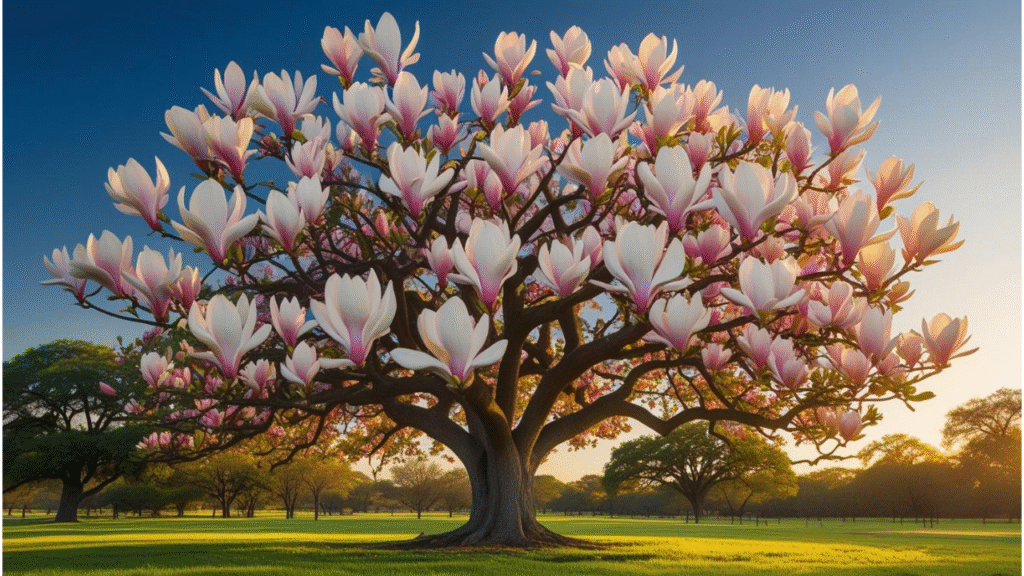
How to Care for a Magnolia Tree in Texas: Expert Tips for Thriving Growth
There’s nothing quite like the beauty of a Magnolia tree in full bloom — its large, fragrant flowers make a striking statement in any Texas garden. 🌸 But while these stunning trees are beloved for their grace, many Texas gardeners struggle with keeping their magnolia tree thriving in the state’s unique climate. 🌞 Whether you’re a seasoned gardener or just getting started, caring for a Magnolia tree in Texas can seem like a challenge. From dealing with intense heat and humidity to ensuring proper soil conditions, it can feel overwhelming at times.
But don’t worry, we’ve got you covered! This guide will walk you through expert tips and practical steps to ensure your Magnolia tree flourishes, even in Texas’ unpredictable weather. With the right knowledge and care, your tree will grow strong, healthy, and bloom beautifully year after year. Keep reading to discover how easy it can be to achieve thriving growth with just a little expert guidance! 🌳
Table of Contents
Toggle🌳 Understanding the Magnolia Tree: What Makes It Perfect for Texas? 🌸
Magnolia trees are a true treasure for Texas gardens, offering more than just beautiful flowers. But what makes them so well-suited for this diverse state? Let’s break it down. 😊

🌞 Ideal Climate for Magnolia Trees in Texas 🌞
Texas is known for its hot summers and mild winters, which surprisingly creates an ideal environment for Magnolia trees to thrive. 🌞 These trees love the warm weather and can tolerate the intense summer heat better than you might expect. They’re quite adaptable, with some varieties even doing well in areas of Texas that experience occasional cold snaps.
🌱 Texas Soil: A Natural Fit for Magnolias 🌱
Texas soil comes in many forms, but the rich, loamy soil found in many parts of the state works perfectly for Magnolia trees. 🌱 They enjoy slightly acidic, well-draining soil, which is common in Texas landscapes. Plus, their deep root systems help them survive dry spells, making them relatively drought-tolerant once established. It’s the perfect combination of moisture retention and drainage!
🌸 Magnolia Varieties Best for Texas Gardens 🌸
Not all Magnolias are the same! Texas gardeners often choose between different types of Magnolias that are best suited for local conditions. Here are a few options:
- Southern Magnolia (Magnolia grandiflora): Known for its large, fragrant white flowers, this variety is a classic Texas favorite. It thrives in warmer climates and can handle the heat with ease. 🌺
- Saucer Magnolia (Magnolia x soulangeana): This hybrid is known for its vibrant pink blooms, and while it may be a bit more sensitive to extreme cold, it can do well in areas with mild winters. 🌸
- Sweetbay Magnolia (Magnolia virginiana): Ideal for Texas’ humid conditions, the Sweetbay Magnolia has smaller, fragrant flowers and does well near water sources. 💧
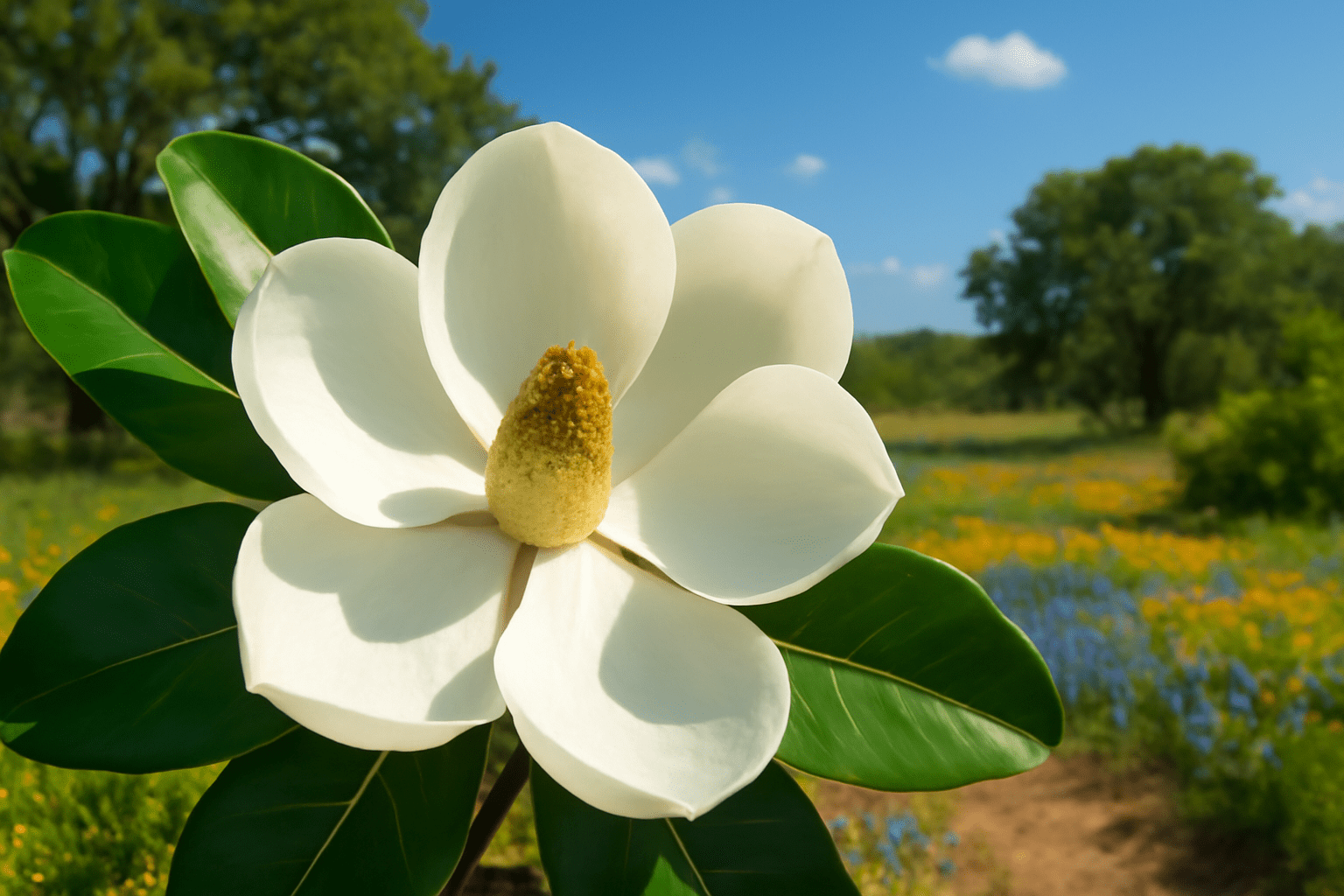
🌵 Drought Tolerance: A Texas Survivalist 🌵
Although Magnolias do best with regular watering, they’re quite tolerant of Texas’ occasional dry spells. 🌵 Their robust root systems allow them to withstand droughts better than other trees, making them a solid choice for Texas gardeners who want a low-maintenance, yet stunning addition to their yard.
With its adaptability to Texas’ climate, soil, and varying weather conditions, the Magnolia tree is not only a beautiful choice but also a practical one. 🌳 Whether you’re planting a Southern Magnolia in the sun-soaked yards of Houston or a Sweetbay near a lake in Dallas, the Magnolia tree can easily become a cherished part of your Texas landscape!
🌱 Preparing for Magnolia Tree Planting in Texas 🌳
Planting a Magnolia tree in Texas can be incredibly rewarding, but it requires a little preparation to ensure your tree thrives in the state’s diverse climate. 🌞 From choosing the right spot to preparing the soil, this section will guide you through the essential steps to set your tree up for success. 🌿

🌞 Choosing the Right Location for Your Magnolia Tree 🌞
Magnolias are relatively flexible when it comes to where they grow, but selecting the right spot is crucial for their health. 🌱 Here’s what to keep in mind: 🌿
- Sunlight: Magnolias prefer full sun to partial shade. 🌞 Aim for a location that gets at least 4-6 hours of direct sunlight daily. 🌞 More sun will help your tree bloom beautifully! 🌸
- Space: Magnolia trees can grow quite large, so choose a spot where they have plenty of room to spread out. 🌳 Ideally, plant your tree at least 10-15 feet away from buildings, fences, or other trees. 🌿
- Protection from Wind: Texas is known for its wind, especially in more open areas. 🌬️ If possible, plant your tree near a natural windbreak (like a fence or larger trees) to protect it from strong gusts. 🌳
🍂 Best Time for Planting Magnolia Trees in Texas 🍂
Timing is key when planting your Magnolia tree in Texas. 🌞
- Spring: Early spring is generally the best time to plant. 🌸 The soil is warming up, and the tree has enough time to establish roots before the heat of summer hits. 🌷
- Fall: You can also plant in the fall, especially in the southern parts of Texas. 🍂 Cooler weather allows the tree to establish its root system without the stress of summer heat. 🌞 Avoid planting during the hottest part of the summer or during frost in winter, as the tree may struggle to establish roots. ❄️
🔬 Preparing the Soil for Planting 🔬
Magnolia trees thrive in slightly acidic, well-drained soil. 🌱 Here’s how to make sure your soil is ready: 🌿
- Soil Test: Start with a soil test to determine its pH level. 🔬 Magnolias prefer slightly acidic soil, with a pH between 5.5 and 6.5. 🌸 You can buy a simple pH test kit or get one from your local garden center. 🌿
- Improving Drainage: If your soil is heavy clay or tends to hold water, improve drainage by mixing in organic matter like compost or well-rotted manure. 🌱 This will help the roots get the oxygen they need. 🌿
- Aeration: If the soil is compacted, loosen it by tilling the area where you plan to plant. 🌱 Healthy, loose soil will encourage strong root growth. 🌸
🌸 Step-by-Step Guide to Planting Your Magnolia Tree 🌸
Once your spot is chosen and your soil is prepared, it’s time to plant your Magnolia tree! 🌳 Follow these simple steps: 🌱
- Dig the Hole: Dig a hole twice as wide as the root ball of your Magnolia tree but no deeper. 🌿 The tree’s root ball should sit level with the surrounding soil. 🌸
- Position the Tree: Carefully place the tree in the center of the hole, making sure it’s upright. 🌳 If your tree has a nursery container, gently remove it, being careful not to damage the roots. 🌱
- Backfill with Soil: Fill the hole with a mix of the soil you removed and any amendments (like compost). 🌿 Make sure the tree is standing straight, and gently firm the soil around the roots to remove air pockets. 🌸
- Water Thoroughly: After planting, give your tree a good deep watering. 💧 This helps settle the soil and ensures the roots have good contact with the earth. 🌱
- Mulch: Add a layer of mulch around the base of the tree to retain moisture and keep the soil cool, but make sure the mulch is not piled against the trunk. 🌿
🌱 Pro Tip: 🌱
Consider adding a slow-release fertilizer when planting to give your tree an extra boost in its early stages. 🌱 However, avoid over-fertilizing, as this can harm young trees. 🌸
By following these simple planting steps, you’ll give your Magnolia tree a strong foundation to grow and thrive in Texas! 🌷 Keep these tips in mind, and your tree will flourish in no time. 🌿
🌳 Essential Care Tips for Your Magnolia Tree in Texas 🌸
Now that your Magnolia tree is planted, it’s time to give it the care it needs to thrive in Texas’ unique climate. 😊 Whether you’re a first-time gardener or a seasoned pro, these essential care tips will help you keep your tree healthy, vibrant, and blooming year after year. 🌿

🌞 Watering Your Magnolia Tree in Texas 🌞
Magnolias need consistent moisture, especially in Texas’ hot climate, but they don’t like sitting in waterlogged soil. 🌱 Here’s how to find the right balance: 🌿
- Watering Frequency: Newly planted Magnolias require deep watering every week, especially in the warmer months. 🌞 Once established, they are somewhat drought-tolerant, but still need regular watering during dry spells. 💧
- Deep Watering: Water the tree deeply, ensuring the water reaches the roots. 🌊 It’s better to water less often but more thoroughly than to give your tree shallow, frequent watering. 🌱
- Avoid Overwatering: Too much water can lead to root rot, especially if your soil doesn’t drain well. 🌿 Always check the soil’s moisture level before adding more water — it should be moist but not soggy. 💦
🌸 Fertilizing Your Magnolia Tree in Texas 🌸
Magnolia trees are relatively low-maintenance when it comes to fertilization, but a little feeding goes a long way toward supporting healthy growth and vibrant blooms. 🌸
- Best Time to Fertilize: Apply fertilizer in the spring before the new growth starts. 🌱 A slow-release fertilizer with a balanced NPK ratio (like 10-10-10) is ideal for Magnolias. 🌿
- How Much to Use: Follow the instructions on the fertilizer package based on the size of your tree. 🌱 Too much fertilizer can harm your tree, so it’s better to under-fertilize than overdo it. 🌿
- Organic Alternatives: If you prefer organic options, compost or well-rotted manure can provide natural nutrients and improve soil structure. 🌱
🌳 Pruning and Shaping Your Magnolia Tree 🌳
Pruning is essential to maintain a healthy, aesthetically pleasing tree. 🌱 Proper pruning helps improve airflow, reduces the risk of disease, and ensures the tree grows strong. 🌳
- When to Prune: The best time to prune your Magnolia is in late winter or early spring, before new growth begins. 🌿 Avoid pruning during the summer when the tree is actively growing, as this can stress it. 🌱
- How to Prune: Focus on removing dead or damaged branches, and thin out crowded areas to improve air circulation. ✂️ Be sure to make clean cuts to prevent disease from entering the tree. 🌱
- Shape the Tree: If your Magnolia tree is young, you can also shape it by removing lower branches to encourage a strong central leader. 🌳 This will help the tree grow tall and upright. 🌱
🍂 Mulching and Soil Maintenance 🍂
Mulching around the base of your Magnolia tree offers numerous benefits, including moisture retention and protection from weeds. 🌿 Here’s how to do it right: 🌱
- Applying Mulch: Spread a 2-4 inch layer of mulch (such as wood chips, pine bark, or shredded leaves) around the base of the tree. 🍂 Be sure to keep the mulch a few inches away from the tree trunk to avoid moisture buildup, which can lead to rot. 🌿
- Soil Maintenance: As the tree grows, monitor the soil’s condition. 🌱 Add compost to maintain its fertility and to improve its texture. 🌿 Magnolias love slightly acidic soil, so you can also test and adjust the pH level as needed. 🍃
🐞 Protecting Your Magnolia Tree from Pests and Diseases 🐞
Texas’ warm, humid climate can attract pests that may harm your Magnolia tree, but with some vigilance, you can keep your tree pest-free and healthy. 🌿
- Common Pests: Keep an eye out for pests like aphids, scale insects, and borers. 🐞 These tiny invaders can weaken your tree by sucking out sap or damaging branches. 🌳
- Prevention: Healthy trees are less susceptible to pests, so focus on proper care (watering, fertilizing, pruning) to strengthen your Magnolia. 🌱 If pests become a problem, use insecticidal soap or horticultural oil to treat the tree. 🌿
- Common Diseases: Magnolias can sometimes fall victim to fungal diseases like powdery mildew or leaf spot. 🍃 These are often a result of poor air circulation or excessive moisture. 🌱 Prune to improve airflow and avoid watering the tree from above to keep leaves dry. 🌸
By following these essential care tips, your Magnolia tree will not only survive but thrive in the Texas climate! 🌸 From watering and fertilizing to pruning and protecting it from pests, every small effort adds up to a healthier, more beautiful tree. 🌿 Keep these tips in mind, and watch your Magnolia flourish in your garden! 🌷
🌿 Troubleshooting Common Magnolia Tree Problems in Texas 🌳
While Magnolias are relatively easy to care for, there are a few common issues that Texas gardeners may encounter. 🌸 Don’t worry, though — with the right knowledge, these problems are usually fixable. 🌿 Let’s dive into some of the most frequent Magnolia tree issues in Texas and how to resolve them. 🌸

🌱 Yellowing Leaves or Leaf Drop 🌱
If you notice that your Magnolia tree’s leaves are turning yellow or falling off prematurely, this can be a sign of stress. 🌿 Here are a few potential causes and solutions: 🌱
- Overwatering or Poor Drainage: Magnolias are sensitive to waterlogged soil, which can lead to root rot and yellowing leaves. 🌊
Solution: Ensure the soil is well-draining and reduce watering frequency. 🌿 Check that the base of your tree isn’t sitting in stagnant water, especially during rainy periods. 🌱 - Nutrient Deficiencies: Yellowing leaves could also indicate a lack of essential nutrients, such as nitrogen or iron. 🌱
Solution: Fertilize your tree with a balanced fertilizer or use iron chelates if you suspect a micronutrient deficiency. 🌿 - Pests: Aphids or scale insects can cause yellowing leaves as they suck the sap from the tree. 🐞
Solution: Inspect the tree for pests and treat with insecticidal soap or horticultural oil. 🌿
🌸 Pale or Small Flowers 🌸
Magnolias are known for their large, fragrant blooms, so it can be disappointing when the flowers are smaller than expected or lack color. 🌸
- Too Much Shade: Magnolias need plenty of sunlight to produce big, beautiful flowers. 🌞
Solution: If your tree is in too much shade, consider relocating it or trimming nearby trees or shrubs to allow more sunlight. 🌿 Aim for at least 4-6 hours of direct sunlight daily. 🌞 - Improper Soil pH: Magnolias prefer slightly acidic soil (pH 5.5 to 6.5). 🌿 If your soil is too alkaline, it can affect flower production. 🌱
Solution: Test the soil’s pH and amend it if necessary by adding sulfur or compost to lower the pH. 🍃
🌞 Tree Stress from Texas Heat 🌞
Texas summers can be brutal, and even the most resilient trees can experience stress. 🌳 If your Magnolia is looking droopy or has wilted leaves during the hottest months, it’s likely dealing with heat stress. 🌞
- Inadequate Watering: Heat stress often occurs when the tree doesn’t get enough water during dry spells. 💧
Solution: Water your Magnolia deeply, especially during dry, hot periods. 🌿 Watering early in the morning or late in the evening helps reduce evaporation. 🌱 Consider using a soaker hose to water deeply at the tree’s root zone. 🌳 - Sunburn: Some varieties of Magnolia, like the Southern Magnolia, are more prone to sunburn if they’re newly planted or not well-established. 🌞
Solution: Provide temporary shade for the tree using a shade cloth or by planting companion plants nearby to offer some relief from the sun. 🌿
🌿 Magnolia Tree Not Blooming 🌿
If your Magnolia tree isn’t blooming as expected, it can be a little frustrating. 🌱 Several factors could be at play: 🌸
- Too Much Fertilizer: Over-fertilizing, especially with a high-nitrogen fertilizer, can lead to lush foliage growth at the expense of flowers. 🌿
Solution: Avoid heavy use of nitrogen fertilizers. 🌱 Instead, opt for a slow-release fertilizer with a balanced nutrient ratio. 🌱 - Improper Pruning: Pruning the tree at the wrong time can result in a lack of blooms. ✂️ Pruning in late summer or fall removes buds that would have bloomed the next season. 🌿
Solution: Prune your Magnolia in late winter or early spring, just before new growth begins. 🌸 This ensures you don’t cut off the next season’s flowers. 🌿 - Age of the Tree: Young Magnolias may take a few years to begin blooming. 🌱
Solution: Be patient, and ensure the tree receives proper care while it matures. 🌳
🍂 Magnolia Tree Leaves Turning Brown 🍂
Brown or scorched leaves are another common problem, particularly in the scorching heat of Texas summers. 🌞
- Overexposure to Heat: If the tree isn’t getting enough water, or if it’s planted in an area with too much afternoon sun, the leaves may scorch. 🌞
Solution: Adjust your watering routine, ensuring the soil stays moist but not soggy. 🌱 Consider relocating the tree to a spot that gets afternoon shade, especially in the hottest areas of Texas. 🌿 - Root Problems: Root damage from pests or overwatering can cause brown, crispy leaves. 🌱
Solution: Inspect the tree’s roots for signs of damage or rot. 🌿 If the roots are compromised, replant the tree in a better location with improved drainage. 🌱
🌳 Pro Tip: 🌳
Always keep an eye on your Magnolia tree for early signs of stress. 🌿 By addressing problems early on, you can prevent more severe issues from developing, ensuring your tree continues to thrive in the Texas climate. 🌳
With a little attention and care, most of these Magnolia tree problems can be easily resolved, allowing your tree to continue adding beauty and charm to your Texas garden! 🌷
🌞 Seasonal Magnolia Care: Adapting to Texas’ Climate 🌿
Texas weather is known for being unpredictable, which means your Magnolia tree requires a bit of seasonal care to stay healthy and vibrant throughout the year. 🌸 From the scorching heat of summer to the cooler winter months, here’s how to adjust your care routine to ensure your tree thrives in every season. 🌿
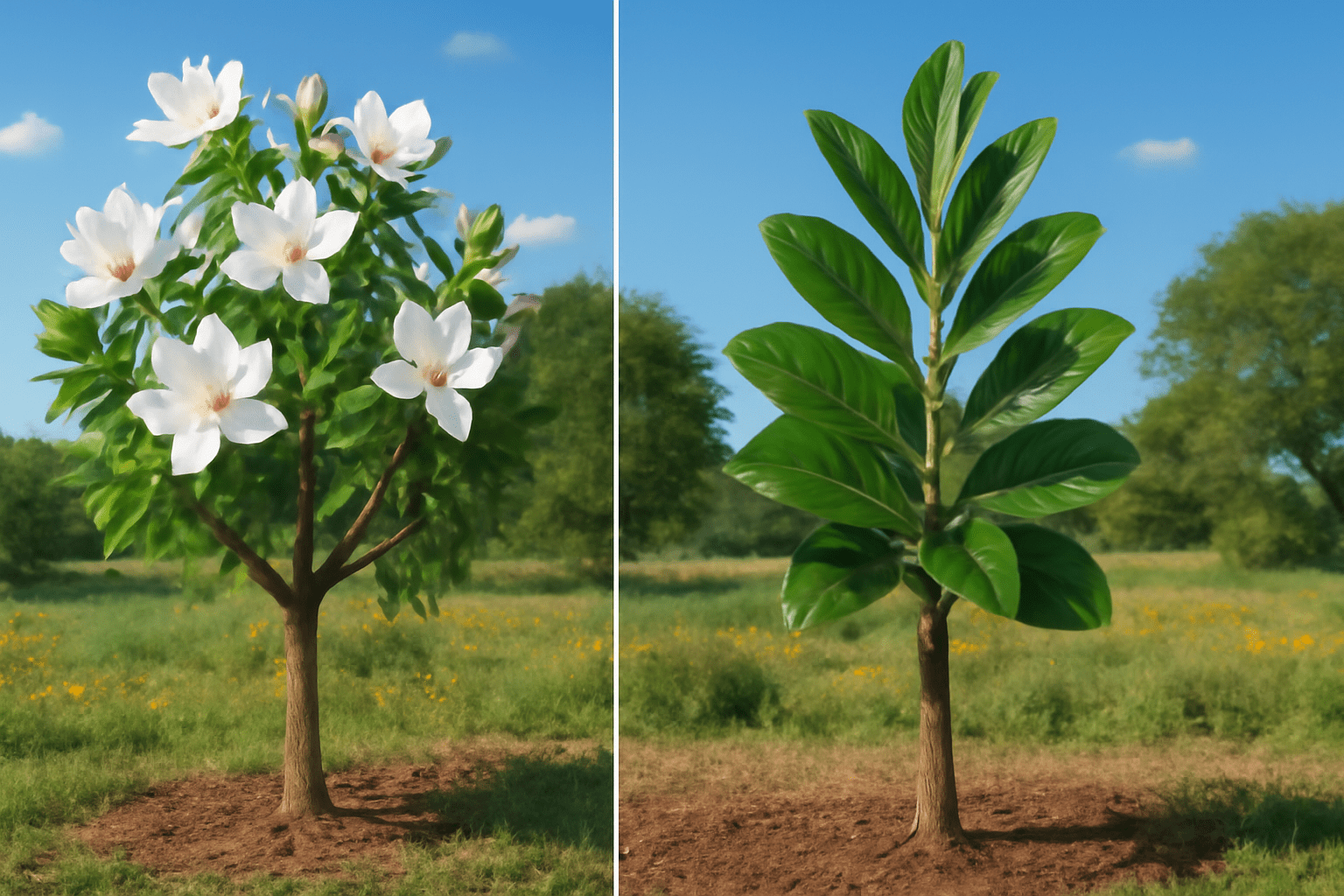
🌷 Spring Care for Magnolia Trees in Texas 🌷
Spring is the time when your Magnolia tree begins to wake up from winter dormancy, and it’s a crucial time for encouraging healthy growth and beautiful blooms. 🌸
- Fertilizing: Apply a balanced, slow-release fertilizer in early spring before new growth begins. 🌱 This will give your Magnolia the nutrients it needs to produce strong, vibrant blooms. 🌿
- Pruning: If you haven’t already done so in late winter, now is the time for light pruning. ✂️ Remove any dead or damaged branches to promote healthy growth. 🌳 Avoid heavy pruning, as you may cut off buds that are preparing to bloom. 🌸
- Check for Pests: As the weather warms up, pests like aphids and scale insects can become more active. 🐞 Keep an eye out for signs of infestation and treat with insecticidal soap if necessary. 🌿
🌞 Summer Care for Magnolia Trees in Texas 🌞
Texas summers can be brutal, with high temperatures and intense sun. 🌞 Magnolias can handle the heat, but they still need extra care during this time to prevent stress. 🌿
- Watering: Deep watering is essential during the hot summer months. 💧 Magnolias need to stay hydrated, especially during dry spells. 🌞 Water your tree deeply once a week, ensuring the water reaches the roots. 🌱 If the weather is particularly hot, water more frequently. 🌿
- Mulching: Apply a 2-3 inch layer of mulch around the base of the tree to help retain moisture and keep the soil cool. 🍂 Make sure the mulch is not touching the trunk, as this can cause rot. 🌱
- Provide Shade: If your tree is young or newly planted, consider providing temporary shade to protect it from the harsh afternoon sun. 🌳 Shade cloth or surrounding plants can help reduce stress on the tree. 🌿
- Monitor for Heat Stress: If you notice wilting or yellowing leaves, your tree may be struggling with heat stress. 🌞 Adjust your watering routine and ensure the tree has enough protection from the heat. 🏜️
🍂 Fall Care for Magnolia Trees in Texas 🍂
Fall is a time of transition, and while the weather cools, it’s still essential to care for your Magnolia tree to prepare it for the coming winter. 🍁
- Watering Adjustments: As temperatures drop, you’ll need to reduce the frequency of watering. 🌿 However, it’s important to keep the tree hydrated, especially if the fall is dry. 🌞 Water deeply but less often. 💧
- Mulch for Winter Protection: Add an extra layer of mulch around the base of the tree in the fall to insulate the roots and protect them from colder temperatures. 🍂 Avoid piling the mulch too high around the trunk. 🌱
- Prepare for Frost: If you live in northern or higher-altitude parts of Texas, frost can be a concern. 🌨️ Protect young trees with frost cloths during cold snaps to prevent damage to the buds. ❄️
❄️ Winter Care for Magnolia Trees in Texas ❄️
Although Texas winters are generally mild, cold snaps can still occur, especially in northern regions of the state. 🌳 Winter care for your Magnolia tree focuses on preventing freeze damage and maintaining moisture. ❄️
- Watering in Winter: Even though your tree is dormant during the winter months, it still needs some water. 🌱 Check the soil every few weeks to ensure it’s not too dry, especially if you haven’t had rain. 🌿 Water deeply but less frequently than in the summer months. 💧
- Protecting from Frost: Magnolias, especially young ones, can be sensitive to sudden frosts. ❄️ If temperatures drop unexpectedly, cover your tree with frost cloths or blankets to protect the leaves and buds. 🌿 Ensure the covering doesn’t touch the tree itself, as this can cause frost damage. 🌨️
- Avoid Fertilizing: Hold off on fertilizing your Magnolia tree during the winter months. 🌱 Fertilizer during dormancy can stimulate new growth, which is vulnerable to cold damage. ❌
- Check for Pests: Winter pests like scale insects may still be active. 🐜 Inspect the tree for signs of pests and treat as needed, especially if you see sticky residue or deformed leaves. 🌱
🌳 Pro Tip: 🌳
In warmer areas of Texas (like the southern parts), your Magnolia tree may not require as much frost protection. 🌞 However, in northern areas, it’s essential to stay on top of winter care, especially in years with unpredictable cold fronts. ❄️
By adjusting your Magnolia tree care routine to suit each season, you’ll help your tree stay strong, healthy, and ready to bloom again when the time is right. 🌱 Whether it’s staying hydrated during summer heat or preparing for frost in winter, these seasonal tips will ensure your tree thrives year-round in Texas! 🌿
🌵 Magnolia Tree Problems Specific to Texas 🌳
While Magnolias are generally hardy trees, Texas’ unique climate can present specific challenges. 🌸 From droughts to occasional freezes, Texas gardeners need to be prepared for a variety of issues that can affect the health of their Magnolia trees. 🌿 Let’s explore some of the most common problems specific to Texas and how to address them. 🌸
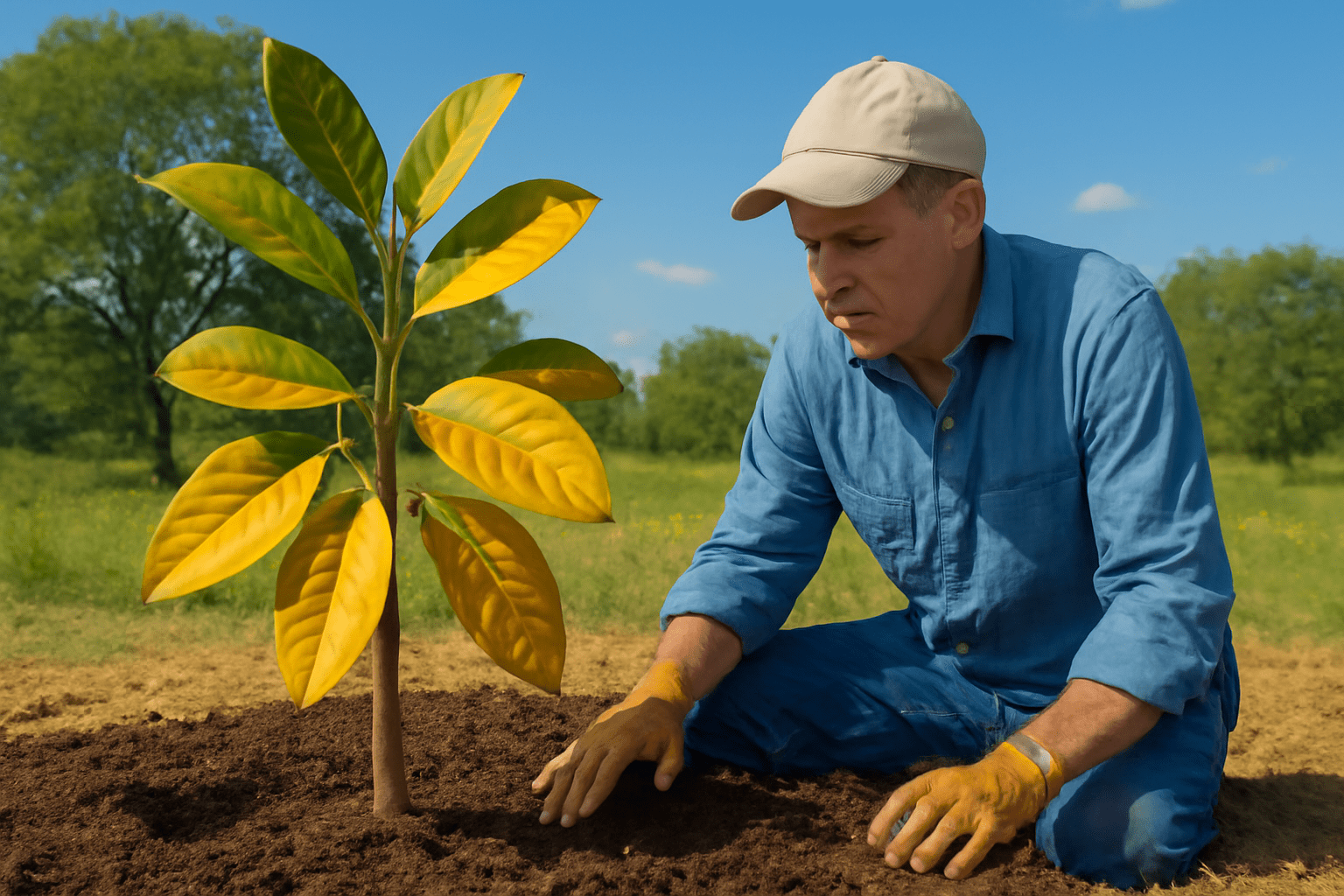
🌞 Drought Stress and Water Conservation 🌞
Texas is known for its periodic droughts, and during these dry spells, even the most resilient trees can show signs of stress. 🌱 Magnolias, while somewhat drought-tolerant, still require regular watering, especially in the hottest months. 🌞
- Signs of Drought Stress: Wilting leaves, dry, brittle foliage, and yellowing are common signs that your Magnolia tree isn’t getting enough water. 🌿
- Solution: Deeply water your tree once a week during dry periods. 💧 You can use a soaker hose or a drip irrigation system to target the root zone directly. 🌱 Mulching around the base of the tree will also help retain moisture and reduce evaporation. 🌿
- Pro Tip: During extreme drought conditions, consider using water-saving products like soil moisture retainers or compost to help your Magnolia conserve moisture. 🌱
🌞 Heat Stress and Sunburn 🌞
Texas summers can bring intense heat, which can cause your Magnolia tree to suffer from heat stress. 🌞 Even though Magnolias can tolerate warm weather, prolonged exposure to excessive heat can lead to damaged leaves and stunted growth. 🌿
- Signs of Heat Stress: Brown, crispy leaf edges, leaf curl, or wilting during the hottest part of the day. 🌱
- Solution: To protect your tree, water deeply during early mornings or late evenings when the heat is less intense. 💧 Provide temporary shade during the hottest months, especially for young or newly planted trees. 🌳 You can use shade cloth or surrounding plants to shield the tree from midday sun. 🌞
- Pro Tip: If you’re planting a new Magnolia tree, choose a location with afternoon shade to help it adjust to the heat more easily. 🌿
❄️ Freeze Damage and Winter Protection ❄️
While Texas winters are generally mild, unexpected cold snaps can still cause damage to your Magnolia tree, particularly in northern and higher-altitude areas of the state. 🌳 Frost can damage the leaves, buds, and even the branches of Magnolia trees. ❄️
- Signs of Freeze Damage: Brown, blackened leaves or buds, drooping branches, or even dieback of the tips. 🌨️
- Solution: If a cold front is expected, cover your Magnolia tree with frost cloths or blankets, especially younger trees that are more susceptible to freezing temperatures. 🌿 Be sure the cover doesn’t touch the tree directly to avoid frost damage. ❄️ If your tree is large, consider using a windbreak or planting near a south-facing wall to shield it from harsh winds. 🌬️
- Pro Tip: For extra protection, add a thick layer of mulch around the tree’s base to insulate the roots during colder months. 🍂
🌱 Soil Issues: Clay and Compaction 🌱
Texas is home to a variety of soil types, but many areas feature heavy clay soil that can retain too much water or become compacted. 🌿 While Magnolias prefer slightly acidic, well-drained soil, heavy clay can hinder their root growth. 🌱
- Signs of Soil Problems: Poor growth, yellowing leaves, or signs of root rot can indicate that the soil isn’t draining properly. 🌿
- Solution: Improve the drainage by adding organic matter such as compost, pine bark, or perlite to the soil before planting. 🌱 You can also aerate the soil around the tree to encourage root growth. 🌳 If the soil is too compacted, consider using a raised bed or planting on a mound to improve drainage. 💧
- Pro Tip: Regularly check the soil around your Magnolia for signs of compaction. 🌱 If it feels hard or water doesn’t penetrate easily, it’s time to amend the soil. 🌿
🐞 Pests and Diseases in Texas 🐞
Texas’ warm, humid climate can attract a variety of pests and diseases that can damage your Magnolia tree. 🌸 The most common culprits include scale insects, aphids, and fungal infections. 🌱
- Pests: Scale insects, aphids, and magnolia borers are common pests that can feed on your tree’s sap, weakening its health. 🐞
- Solution: Regularly inspect your tree for signs of pests. 🌿 If you notice sticky residue, discolored leaves, or wilting, treat the tree with insecticidal soap or horticultural oil. 🌱 Hand-picking pests off the tree can also help. 🌿
- Diseases: Magnolia trees in Texas are prone to fungal diseases like powdery mildew or leaf spot, which thrive in humid conditions. 🌧️
- Solution: To prevent fungal infections, ensure proper air circulation by pruning your tree and removing fallen leaves. 🍂 Avoid overhead watering, as wet leaves can lead to fungal growth. 🌱 If fungal issues persist, apply a fungicide that’s safe for Magnolias. 🦠
- Pro Tip: A healthy, well-maintained tree is less likely to suffer from pest and disease issues, so be proactive with watering, fertilizing, and pruning. 🌿
🌳 Pro Tip: 🌳
Always monitor your Magnolia tree regularly for signs of stress, pests, or disease. 🌱 Catching problems early can make all the difference in ensuring your tree stays healthy and continues to thrive in Texas’ unpredictable climate! 🌳
By understanding these common Magnolia tree issues specific to Texas, you can take proactive steps to prevent and resolve problems quickly, ensuring your tree continues to thrive in your garden. 🌸
🌿 Final Thoughts 🌸
Caring for a Magnolia tree in Texas can be a truly rewarding experience, offering beauty, shade, and a touch of Southern charm to your garden. 🌳 By understanding your tree’s unique needs and adapting to Texas’ climate, you can ensure it grows strong, healthy, and continues to bloom year after year. 🌸
From choosing the perfect spot for planting to dealing with the heat, drought, and occasional frost, you’ve learned how to provide your Magnolia tree with the best care throughout the seasons. 🌞 With a little attention and the right approach, your Magnolia will thrive, transforming your garden into a stunning haven. 🌱
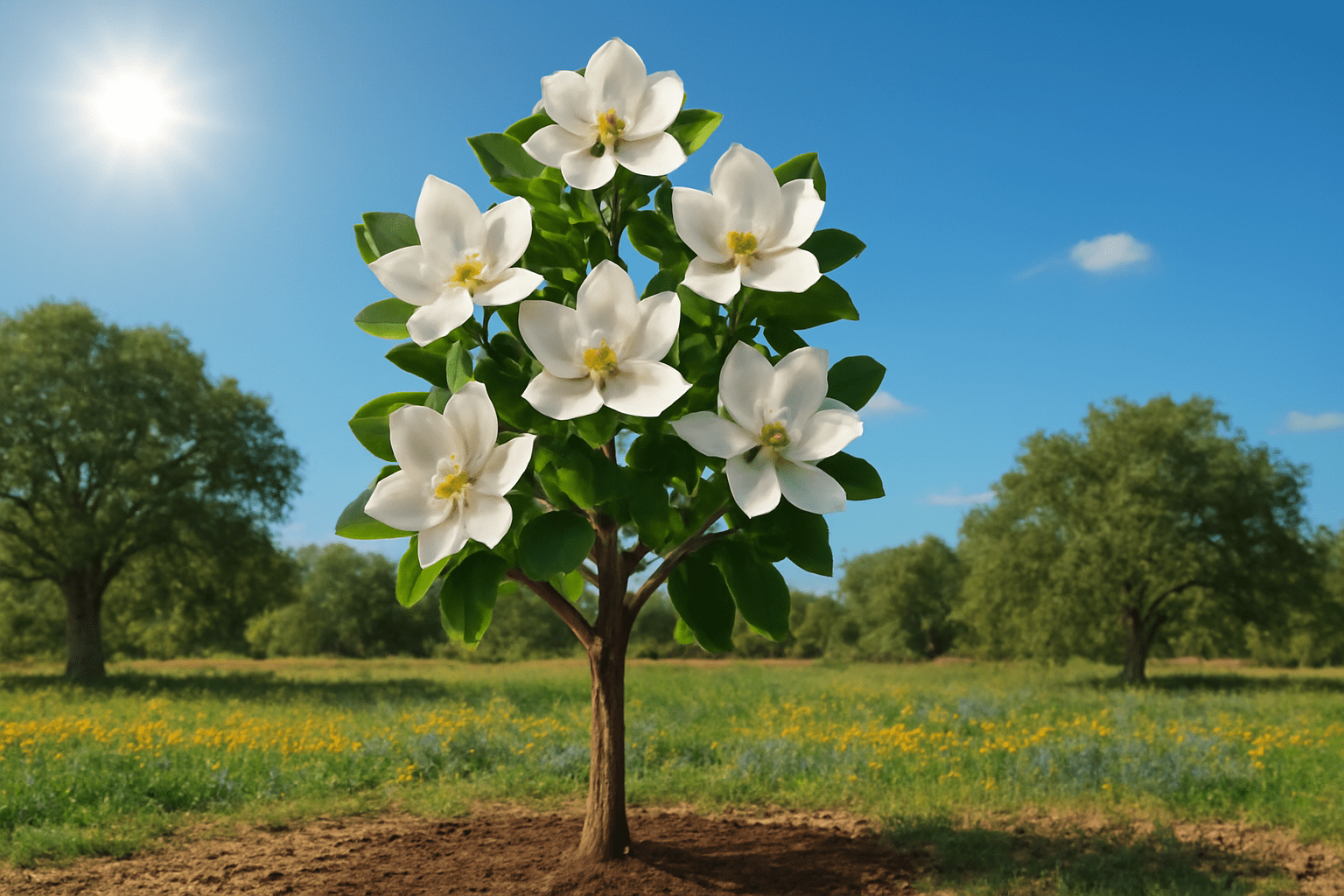
Remember, a little patience goes a long way. ⏳ Whether you’re troubleshooting common problems, improving soil conditions, or preparing for the changing seasons, each step brings you closer to creating a flourishing Magnolia tree that will be the pride of your Texas landscape. 🌿
Now that you’re equipped with expert tips and knowledge, it’s time to get out there and start planting and caring for your Magnolia tree with confidence! 🌸 Happy gardening! 🌱
Frequently Asked Questions (FAQs)
How often should I water my Magnolia tree in Texas?
Magnolia trees in Texas need deep watering about once a week, especially during hot, dry periods. Newly planted trees require more frequent watering, while established trees are more drought-tolerant. Be sure the soil is moist but not soggy to avoid root rot. 💧
What is the best time to plant a Magnolia tree in Texas?
The best time to plant a Magnolia tree in Texas is during early spring or fall. These seasons provide mild temperatures that help the tree establish its root system before the heat of summer or the chill of winter sets in. 🌱
Why are the leaves on my Magnolia tree turning yellow?
Yellowing leaves on a Magnolia tree can be caused by overwatering, nutrient deficiencies, or pests. Check for waterlogged soil, consider fertilizing if nutrients are lacking, and inspect for signs of aphids or scale insects. 🌿
How can I protect my Magnolia tree from Texas heat?
To protect your Magnolia from Texas heat, water it deeply in the early morning or late evening when it’s cooler. Add mulch around the base to retain moisture, and consider providing temporary shade during the hottest months, especially for younger trees. 🌞
Do Magnolia trees require pruning?
Yes, Magnolia trees benefit from occasional pruning to remove dead or damaged branches and maintain a clean, healthy structure. The best time to prune is in late winter or early spring, before new growth begins. Avoid pruning in the summer, as this can remove blooming buds. ✂️
Why isn’t my Magnolia tree blooming?
If your Magnolia tree isn’t blooming, it may be due to insufficient sunlight, poor soil conditions, or improper pruning. Ensure the tree receives at least 4-6 hours of sunlight daily and prune it only during late winter to avoid cutting off flower buds. 🌸
How do I protect my Magnolia tree from frost in Texas?
To protect your Magnolia tree from frost, cover it with frost cloth or blankets if freezing temperatures are expected. Make sure the cover doesn’t touch the tree directly, as this can cause frost damage. Adding a thick layer of mulch around the base can also help insulate the roots. ❄️
What type of soil is best for planting a Magnolia tree in Texas?
Magnolia trees thrive in slightly acidic, well-draining soil. Texas gardeners should amend clay-heavy soil with compost or organic matter to improve drainage and texture. A soil pH between 5.5 and 6.5 is ideal for healthy growth. 🌱
